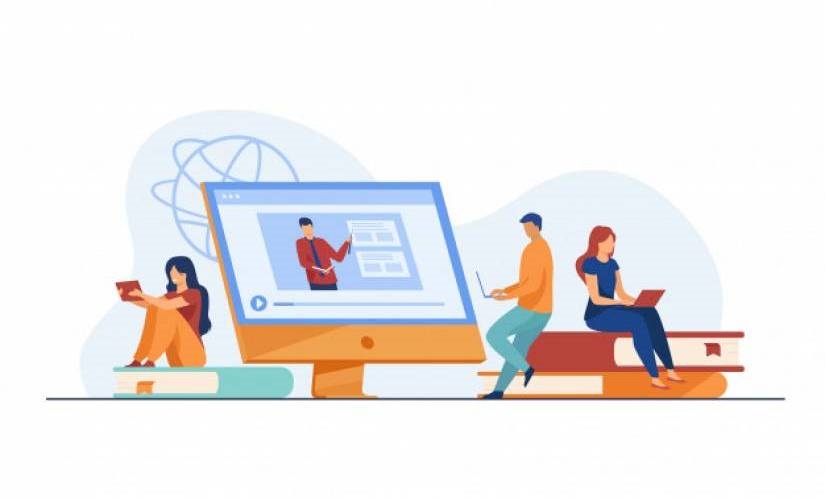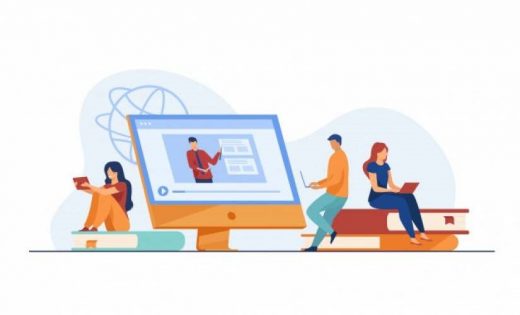The Rise of Ed-Tech During COVID, and its Limitations
The Rise of Ed-Tech During COVID, and its Limitations

Ed-tech stands for education technology. It comprises of everything from learning the simple use of computers to learn math, to the submission of homework online, and getting a degree online, or learning virtual reality techniques. All technology is changing and improving most segments of our economy; our education sector is also undergoing a tech revolution.
Ed-tech is not just about reformatting books and digitalizing them. It is, in fact, about learning the application of digital technology to deliver a new form of learning structure. It focuses on giving personalized training that can adjust to an individual’s learning competence by understanding ways that can help the learners progress.
Ed-tech will add much to classrooms as innovative systems and software improve. However, you will likely find people who will remain skeptical about it — but that is the bane of all innovation. If you are looking to increase your knowledge of ed-tech, here’s a breakdown of the advantages and limitations of using it.
What are the advantages of Ed-Tech?
- It is cost-efficient. The costs of building educational institutions, paying the fee of the instructors, the staff, maintenance of the building, and the cost of resources make traditional learning very expensive. Less money can be spent on hardware at schools if reliable broadband is available and students use their equipment such as their tablets or iPads.
- It improves user engagement and learning impact. When you save on educational and training budgets, that money could get invested in smart learning software programs that provide tailored lesson plans or engaging video materials. It improves understanding and promotes better results. If a student has any question, they can immediately search for it on the internet and get instant results. If a teacher is finding difficulty in explaining a concept to the students, she can get access to materials online. It can make concepts easy to explain.
- Ed-tech is also bridging the gap between what happens in the classroom and outside the classroom. Students can access digital resources at home or on the subway. It is changing the way students are consuming education, as it is available for them all the time.
- Everyone can get the same standard of education. A small-scale school in any part of the world can receive the same level of education that is getting offered in a well-funded school in a posh area. All they need is good internet access. Many Harvard and Stanford courses are getting offered online that anyone across the globe can access and benefit from.
- Students learn how to master email formats, troubleshoot any glitches on their computers, and get comfortable in creating aesthetically-pleasing presentations. All these are skills and tools that they need in their personal and professional life ahead. Online behavior has its own set of ethics that students must know of. Being a tech-savvy employee will always give them an edge over their peers.
- Teaching new faces can be a tedious task for teachers, especially in understaffed schools. Every student is unique and learns differently. There are learning programs that have been designed to track the personal progress of students and figure out a student learns. Knowing how an individual learns will help with individualized learning programs. If teachers supplement their classroom with customized software — they can fill the needs of individualized students.
Let us now have a look at some of the limitations of Ed-Tech:
- There is a possibility of distraction. If boundaries are not established for students, there is a high chance of them getting distracted by their gadgets and using them for play. It is also very likely that students in the classrooms would have a greater understanding of their tablets or iPads than their teachers. They can figure out ways to text their friends. It can be a task to figure out how to maintain a balance between the students’ natural inclination to use the technology inappropriately, and your inclination to encourage media literacy.
- It can promote inequality among students. A reason for this is because not every student can afford or have access to technology outside the classroom. It would result in their failure to finish their homework. The option to rent the tablets or download programs from the library might also not be feasible for many, as it would depend on the availability of the tablets.
- The increase in the use of technology means there will be a loss of human connection. Digital literacy is indeed the need of the hour, but students also need interpersonal skills to succeed in their personal and professional lives. There have been numerous discussions about the millennial generation’s anti-social inclinations that are a result of excessive social media use. Many behavioral therapists are concerned that over time, students will lose the ability to communicate verbally and fail to learn the skills which are necessary for a fulfilling social life. Finding a good job also depends on how you present yourself in your interview. If you get appointed as a manager in a company, your progress would depend a lot on how you communicate with your team members.
- There is a chance that the progression of ed-tech may replace teachers. There is no substitute for human instruction, but some believe that ed-tech may result in eliminating jobs for teachers. Even though most ed-tech has been designed to support traditional teaching methods, but there is a possibility that digital instruction might become a norm. Education budgets are getting tighter year after year, and people are enjoying technology that personalizes their instruction based on the user. That is why it is not surprising that other industries such as the agriculture industry and manufacturing industry have faced a technology takeover.
Weighing the Pros and Cons of Ed-Tech.
No matter what your point of view is about ed-tech, you must consider the pros and cons before you implement or advocate against the use of technology. Every learner is different, and ed-tech may not be the answer for everyone. The needs of the classroom should be taken into consideration before making any decision.
If you decide on giving ed-tech a shot, there are ways that you can limit its downsides. For instance, if you are concerned about students wasting their time by playing games on their tablets or texting rather than studying, schools can make it mandatory to install kids monitoring apps on every child’s tablet.
What About Kid-Monitoring Apps?
One such kid monitoring app is XNSPY. School administrators can invest in the app and download it on all the school-owned devices, which the teachers can monitor remotely. It is especially useful during the time of the pandemic, as distance learning is the new norm. XNSPY will give the teachers access to the students’:
- Browsing history. Teachers can see that the child is only browsing related course material.
- Text messages. Teachers can catch students if they are texting during an exam.
- Current location. By using the GPS tracker, teachers can check whether the students are on the premises of the school or not.
- Email accounts. Teachers can keep a tab on all the sent and received emails from the tab.
- Social media accounts. The students tend to get distracted by social media notifications. Teachers can manage their usage remotely and check to ensure that they are not getting bullied at school.
School Administration Responsibilities
School administration can also try to incorporate both ed-tech and traditional ways of teaching to achieve the best results. For instance, if the duration of math class is 2 hours every day, one hour can get dedicated to online learning, while the other hour can get used for discussion in the classroom. Teachers can also assign group projects to students where they would have to research for the material online.
However, they should present the project while working in coordination with each other. It will also improve their interpersonal skills and teach them how to make the best use of technology together.
It is always best that you experiment with ed-tech. Whether or not new tools directly improve our students’ understanding, learners will benefit from being exposed to unique resources. Consistent feedback from students and teachers can be taken to assess the overall experience to help you make the best choice for your classroom.
The post The Rise of Ed-Tech During COVID, and its Limitations appeared first on ReadWrite.
(18)


